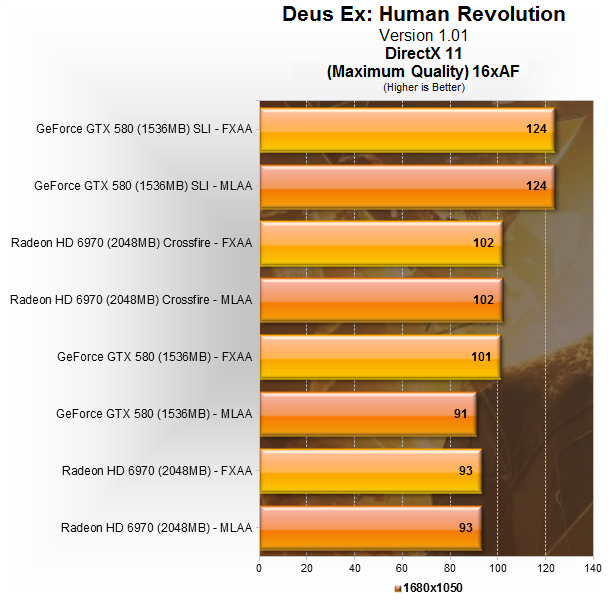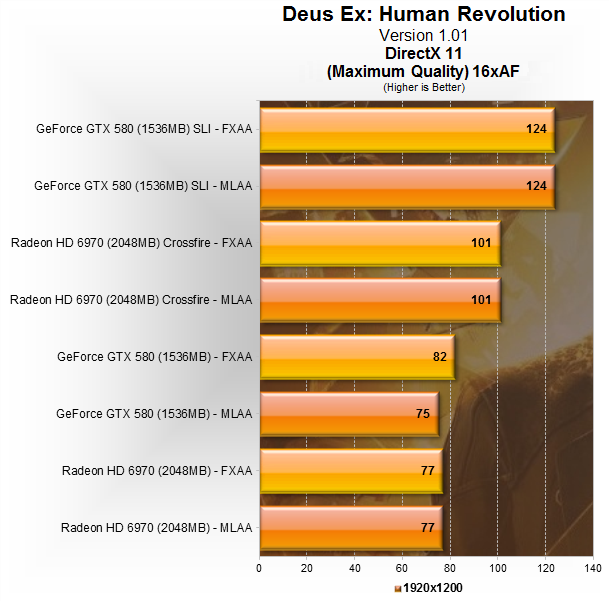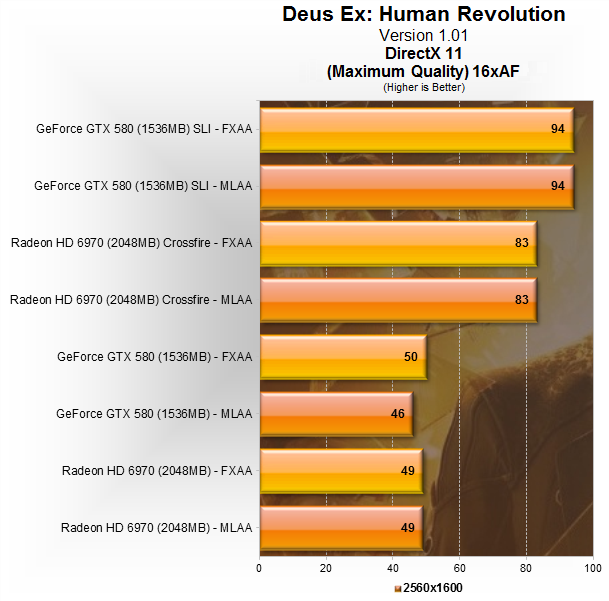MLAA vs. FXAA Performance
Morphological Filtering Anti-Aliasing was developed by AMD and since we tested with this mode it could put the Nvidia cards at a disadvantage. Fast Approximate Anti-Aliasing on the other hand has been developed by Nvidia, so which of the two should we have tested with?
Since we found that the Radeon cards churned out exactly the same performance using either MLAA or FXAA we decided to test with MLAA. The GeForce graphics cards also delivered similar performance when using either, though on occasion we saw a reasonable performance gain with FXAA, here are some comparisons using high-end cards...

At 1680x1050 the AMD Radeon graphics cards delivered the same performance using FXAA and MLAA. This was also true for the GeForce GTX 580 SLI graphics cards though they were likely both CPU limited anyway. The single GeForce GTX 580 was 11% faster when using the FXAA mode.

At 1920x1200 the AMD Radeon continues to show no difference, while the GTX 580 showed a 9% increase in performance when using FXAA.

At 2560x1600 we again see a 9% performance improvement when using FXAA with the GeForce GTX 580. There was no performance change for the SLI setup, while the Radeon graphics cards also delivered the same performance using either MLAA or FXAA.
